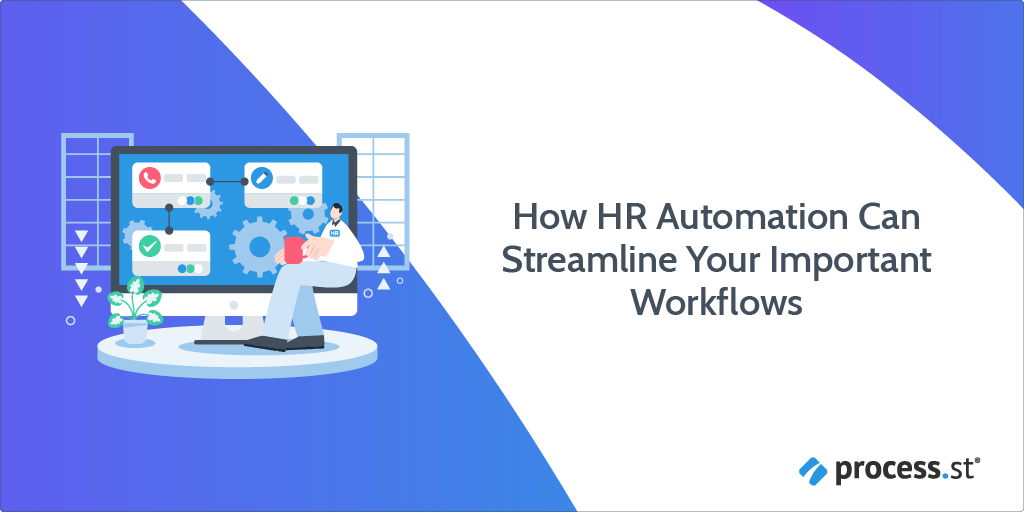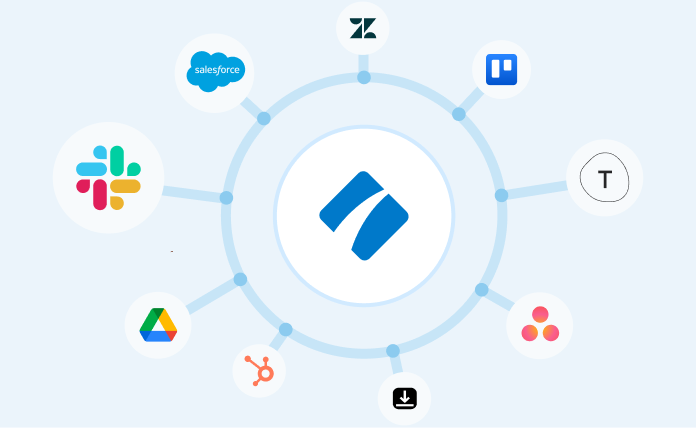
Hanson Cheng is the founder of Freedom to Ascend. He empowers online entrepreneurs and business owners to put the HR automation systems in place for growth and 10x their business.
Despite being responsible for managing human resources, the HR department is usually one of the most understaffed and overworked departments in many companies. This is because HR involves many manual, repetitive, and monotonous tasks—these range from recruitment to pay and benefits to everything else in-between.
Automating your HR processes will help you:
- Streamline workflows
- Ensure all your processes are consistent
- Reduce errors
Ultimately, HR automation saves you time and money — valuable resources you could better spend on other pressing HR tasks. Research shows that automation can help decrease administrative tasks by 49 percent for HR employers and 30 percent for HR professionals. The same study also revealed that up to 34 percent of HR departments said their organizations were slow in adopting HR automation.
In this Process Street post, we’ll be covering:
- What is HR automation?
- Benefits of HR automation
- 7 key HR processes to automate in 2021
- Why not automating HR processes can set you back In 2021
- HR automation: It’s not an option anymore
What is HR automation?
Before we look at the seven key human resources that must be automated, let’s quickly define HR automation so that we’re on the same page.
HR automation is the process of enhancing your HR department’s efficiency by automating standard and repetitive tasks by using tools. Automation helps free up your HR personnel from tedious manual tasks and allows them to focus on more complex functions like decision making and strategizing.
Automating HR activities will help your organization streamline core HR processes. As a result, you reduce the cost and time you’ll spend on manual HR planning and processing. Besides, in the age of remote work we’re living in, you have no choice but to automate your HR processes.
HR automation: How to work smarter
Many organizations prioritize automating departments like marketing and sales because they can justify the ROI with hard data. While HR automation may not directly impact your bottom line, it still has many tangible benefits that make it worthwhile. Here are some of the major advantages you get from automating your HR processes:
Improved productivity
HR automation’s most significant selling point is that it helps improve your HR staff’s productivity. Automating repetitive tasks frees up their hands to handle other duties and responsibilities, resulting in more work done. Besides enhancing your HR staff’s productivity, HR automation also helps boost productivity across your organization. This is thanks to more accurate and data-backed hiring decisions that ensure you hire the best employees.
Reduced employee turnover
Because HR is responsible for employee welfare, your HR department’s performance directly affects employee turnover. For example, nearly 50 percent of Americans say they will switch employment after two paycheck errors. And a high employee turnover means increased recruitment costs, especially as replacing an employee costs an average of $4,129.
Better data management and security
One of the most significant benefits of HR automation is software that allows you to store your data securely. Especially if your HR automation platform allows for backing up your data in the cloud, you’re assured that your information is safe from corruption or loss from natural disasters. Most importantly, your data is protected from unauthorized access and use.
Besides the security factor, HR automation makes it easy to manage data. From storage to analytics to retrieval, managing digital data is way easier than manually going through spreadsheets and files.
Reduced time to hire ⌛
Another significant advantage of HR automation is that it drastically cuts down the time it takes to hire an employee. This is because automation reduces the time it takes to screen candidates, run background checks, onboard employees, and many other tasks involved in recruiting and hiring a new employee.

Reducing your time to higher also makes for a good candidate journey, thus ensuring you don’t miss out on top talent.
Accuracy and consistency
One of the biggest problems with manually processing HR tasks is human error. From bias during the recruitment process to missing employee files, it’s easy to have a flawed HR system — if you do things manually.
However, HR automation eliminates most errors. Not only that, but it ensures for consistency of processes and consistency across all your locations.
Scalability
For recruitment agencies, perhaps one of the most significant benefits of HR automation is that it allows for easy scalability. With most repetitive tasks automated, you have more time to take on more clients and recruit talent at scale.
Improved interdepartmental collaboration
HR is a critical department as it interacts with all other departments in your organization. Manually running from one department to another just doesn’t cut it anymore. By automating your HR and integrating your HR automation tools with other departments’ tools, you can easily and effortlessly collaborate with them.
However, the bottom line is that automating your HR processes results in improved business efficiency, resulting in a boost in your bottom line.
Unfortunately, with all these benefits, many organizations are still trailing behind the HR transformation curve. That’s why, when you implement an HR automation strategy, you have a competitive advantage over your competitors.
Why now is the right time for HR automation
If you haven’t yet, this is undoubtedly the best time to automate your HR processes. One of the main reasons for that is that data security and compliance regulations are becoming more strict.
Human resources management involves dealing with sensitive candidate and employee data and information. Because of that, you must adhere to data capture and management best practices. This ensures that you’re compliant with all data management regulations.
Compliance in recruitment refers to offering equal opportunities to all candidates and fair treatment in the workplace. It boils down to following standards and regulations that govern recruitment and labor practices. Failure to comply with regulations could result in sanctions or financial penalties. It could also tarnish your reputation as an organization, leading to the loss of business.
In both instances above, automation is the best way to ensure that all your HR processes and practices are compliant.
Besides compliance, now is the best time for HR automation as the world is at the peak of digital transformation. With speed and accuracy being ingredients for outperforming your competitors, you have no choice but to automate your processes. Failure to do so will result in you losing top talent, particularly as the job market has become fiercely competitive.
It’s 2021. If you’re still running your HR department on legacy systems and archaic processes, you’re doing your organization more harm than good. Invest in HR automation tools. Doing so will help you have not just an efficient HR department but an efficient organization overall.
7 key HR processes to automate in 2021
Now that we’ve established what HR automation is, its advantages, and why it’s essential, let’s dive into the top seven HR processes you must automate in 2021.
1. Talent acquisition
One of the primary functions of HR is talent acquisition. It’s also one of the top HR processes you must automate. Thanks to recruitment software and tools (like applicant tracking systems (ATS) and chatbots), and other identifying and acquiring talent doesn’t have to be done manually.

Automating this part of the recruitment process has several advantages that include:
- Improved candidate screening
Automating talent acquisition speeds up talent acquisition as it takes care of the most time-consuming part of the process — candidate screening. Traditionally, a recruiter had to open each application and go through every single CV to screen them. However, with an HR automation tool, all a recruiter has to do is set filters using keywords. The software will automatically filter out irrelevant CVs while selecting those that are promising. - Better candidate experience ✔️
With the competition for talent being high, recruiters need to provide job seekers with a good experience during the recruitment process. This helps them acquire top talent. One way of ensuring that you provide candidates with a positive experience is to automate the recruitment process. Doing so helps speed up the process and enables personalized responses. - Reduced recruiting costs
Thanks to analytics and data functions in recruitment software, HR personnel can make better decisions regarding their hires. This helps reduce the costs associated with hiring — especially bad hires.
As you plan on automating your HR processes, ensure that talent acquisition ranks high among the list.
2. Employee onboarding
Employee onboarding is the second touchpoint you’ll have with your recruit after the recruitment process. Being the process through which you familiarize a (new) employee with the organization’s policies, their role in the organization, and the organization’s culture, employee onboarding is a critical step in establishing a good relationship with your new employee.
Because it is so important, there must be no room for errors. And that’s why you must automate it. Besides reducing the risk of errors, automating employee onboarding:
- Enables a smooth onboarding process. Automation makes the onboarding process more streamlined, resulting in a smooth transition for both the employer and employee. You can even use a learning management system (LMS) here to allow your new hire to take in everything at their own pace.
- Higher retention rates. Automating employee onboarding makes for a better experience for your new hire. An excellent first impression results in employees staying with you for longer.
- Consistent candidate journeys. Consistency is key if you’re to give all new hires a memorable onboarding experience successfully. And it takes automation to maintain your high standards consistently.
To successfully automate your onboarding process, map out the process your new hire goes through and determine which aspects will benefit from automation.
3. Employee performance management
Performance management used to be a one-time event to evaluate how employees performed during the year. Today, however, it’s a dynamic process that evaluates employee’s performance by aligning it with your organization’s mission and goals.
And this is where automation comes in.
With HR automation tools like performance management software, you can identify, measure, and improve an employee’s performance. Unlike traditional manual methods that were fraught with errors (and at times biases), automation ensures that each employee’s data is accurate. This results in every employee being appraised fairly.
Other advantages of automating employee performance management include:
- Helps you set clear performance expectations.
- Provides real-time feedback for effective employee development and coaching.
- Improves employee performance and productivity.
- Helps you identify training and development needs.
- Increases employee engagement and retention.
- Gives you insights into counter-productive activities.
Employee performance management is one of the most labor-intensive activities of HR as it involves a lot of employee monitoring and pouring over lots of data. This is why automating this part of your team’s tasks is a must. It will save you lots of time and resources, not to mention the efficiency of automation.
4. HR analytics
Human resources departments collect a lot of data. Unfortunately, most of that data goes unused due to it being too much to sort through manually. HR analytics solves that challenge.
HR analytics is the process of collecting and analyzing human resource data to improve your organization’s workforce performance. It involves measuring the impact of vital HR metrics on your business’ overall performance.
So what are the advantages of automating HR analytics?
It helps you keep an eye on, among other things:
- Retention rates – Insights into why staff turnover is on the rise will help you design a more robust employee retention strategy.
- Employee engagement rates – Employee engagement has a huge impact on productivity. Keeping an eye on engagement rates, therefore, is essential to boosting productivity.
- Absenteeism rates – Monitoring absenteeism rates will help you find out what you can improve to create a more pleasant environment and workplace culture.
Because of the vast amount of data processed in HR analytics, you must automate your HR analytics. Automation eliminates any room for error and speeds up the process of data interpretation.
5. Payroll management
82 million Americans have been affected by payroll problems. And one of the leading causes of that is the lack of technology to reduce human errors. Payroll errors could lead to dissatisfied employees and a rise in staff turnover, among other negative ramifications.
Despite all this, close to 30 percent of organizations are still running their payroll on legacy solutions. And most are over ten years old). And of those embracing technology, a study by The American Payroll Association shows that only 40 percent of their members have fully automated payroll systems.
To avoid unnecessary errors that could frustrate your employees and your HR department, you must automate payroll management. Besides a reduction in payroll errors, automating your payroll also has the following benefits:
- Helps with compliance;
- Improves data security;
- Simplifies tax filing;
- Makes it easy to create reports;
- Streamlines the payroll process;
- Creates room for employee self-service, thereby reducing the risk of errors.
Automating payroll management is no longer an option. If you want to increase your organization’s efficiency and improve employee satisfaction, you have no choice but to automate.
6. Leave calculation and approval
Another HR activity that could do with automation is leave calculation and approval.
Calculating and approving leave days is a tedious task that involves:
- Calculating the number of leave days an employee has;
- Get the manager’s approval;
- Record the leave for payroll calculations.
With so many calculations and hands to go through, there’s plenty of room for error. This is why your HR automation strategy must include leave calculation and approval.
Some advantages of doing so include:
- Reduces administrative burdens;
- Easy access to real-time data;
- Enables informed decisions for leave approval as well as drafting leave policies;
- Easy tracking and approval of leave days.
In times past, the expenses associated with automating leave calculation and approval outweighed the benefits. However, with advancements in technology, those costs have been drastically reduced. You have no excuse for not automating this aspect of your HR tasks.
7. Employee offboarding
One often overlooked HR process that you can automate is offboarding. It’s equally as important as the onboarding process.

When an employee leaves your organization, you must:
- Process the employment termination documents.
- Ensure all equipment is returned.
- Remove the former employee from payroll.
- Terminate their access to your organization’s operational tools and platforms.
Any errors in the offboarding process could put your organization in trouble legally. It could also open you up to data breaches. And that’s why you must rely heavily on automation for this.
HR automation systems will help you create a standardized, automated workflow that ensures accuracy and speed without compromising security. It helps make it easier to complete every step of the onboarding process. And don’t worry about signatures, especially when working remotely as you can simply use electronic signature software.
Creating standardized offboarding processes will help you protect your organization and ensure the employee leaving is satisfied. And yes, cutting ties amicably is essential as it will encourage the employee who’s leaving to give your organization a positive review.
Why you need to add HR automation to your processes yesterday
The world is rapidly advancing in terms of technology, and every business in every industry must do its best to keep up.
Your HR department included.
That’s why you must invest in HR automation. Failure to do so could result in:
- Inefficiencies. Any slight mistake (from recruitment to performance appraisals) could lead to wasted time, revenue loss, and even legal repercussions.
- Wasted time. HR involves a lot of time-consuming yet repetitive tasks. Failure to automate your HR processes leads to your HR department wasting time on tasks that aren’t essential.
- Loss of revenue. Automating your HR processes eliminates menial tasks and human errors, among other things. The result is a reduction in operational costs. Failure to automate, on the other hand, results in you incurring unnecessary costs and losing revenue.
Not automating your HR processes will cost you more in the long run than automating. As such, you’re better off footing the expenses of HR automation now than paying a heftier bill down the road.
HR automation: It’s not an option anymore
Automating your HR processes is no longer an option. Failure to automate will cost you in terms of productivity, finances, and even reputation-wise.
Automation, on the other hand, ensures a more efficient HR department. It also ensures that your employees are more engaged and satisfied with their jobs. When it comes to recruitment, automation helps create memorable candidate journeys that will help you source top talent.
The bottom line: you can’t ignore HR automation anymore.
What HR tasks & processes are you trying to automate? Let us know, and we may be able to recommend you one of our HR workflows to help you get started!







 Workflows
Workflows Forms
Forms Data Sets
Data Sets Pages
Pages Process AI
Process AI Automations
Automations Analytics
Analytics Apps
Apps Integrations
Integrations
 Property management
Property management
 Human resources
Human resources
 Customer management
Customer management
 Information technology
Information technology



Oliver Peterson
Oliver Peterson is a content writer for Process Street with an interest in systems and processes, attempting to use them as tools for taking apart problems and gaining insight into building robust, lasting solutions.